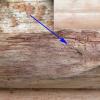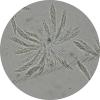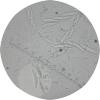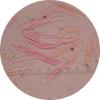
07-01-2026 22:22
 Danny Newman
Danny Newman
Tatraea sp. on indet. hardwood The Swag, Great Sm

10-01-2026 01:18
 Danny Newman
Danny Newman
cf. Neovaginatispora fuckelii on indet. shrub Pre

07-01-2026 10:24
 Danny Newman
Danny Newman
Pezicula sp. on indet. hardwood Appalachian Highl

09-01-2026 17:41
Arnold BüschlenHallo, F. dilatata wird von vielen Bryoparasiten

09-01-2026 10:08
 Blasco Rafael
Blasco Rafael
Hola, en el mismo habitat que la anteriorRetamaDia

08-01-2026 21:22
 Blasco Rafael
Blasco Rafael
Hola, He recogido esta muestra de Orbilia sobre Re

07-01-2026 17:29
 Marc Detollenaere
Marc Detollenaere
Dear Forum,On a barkless Populus I found some smal

10-11-2021 17:33
 Riet van Oosten
Riet van Oosten
Add-on topic http://www.ascofrance.com/forum/7059

07-01-2026 10:05
 Danny Newman
Danny Newman
cf. Chaetospermum on XylariaCosby Campground, Grea
Nectriaceae?
Piet BORMANS,
07-09-2010 12:01
 Est-ce que quelqu'un peut m'aider à déterminer cet asco, qui selon moi appartient au genre Nectriaceae.
Est-ce que quelqu'un peut m'aider à déterminer cet asco, qui selon moi appartient au genre Nectriaceae.Récolté samedi passé sur des tiges mortes de Typha latifolia.
Ascomata rond, couleur jaune-orange, poussant au-dessus du substrat, dimension du diamètre 0,20-0,23mm
Asci 70-85 x 9 - 12 µm.
Spores 17-24 x 4-5 µm, cloisonnées 3 fois.
Alain GARDIENNET,
07-09-2010 12:12
Re:Nectriaceae?
Bonjour Piet,
Un Hydropisphaera certainement, donc un Bionectriaceae (tester la non réaction à KOH).
Probablement Hydropisphaera erubescens. Les spores seraient-elles striées ?
Alain
Un Hydropisphaera certainement, donc un Bionectriaceae (tester la non réaction à KOH).
Probablement Hydropisphaera erubescens. Les spores seraient-elles striées ?
Alain
Alain GARDIENNET,
07-09-2010 12:17
Re:Nectriaceae?
Mais je m'interroge sur l'habitat, H. erubescens étant régulièrement observé sur feuille de houx.
Si un spécialiste pouvait prendre le relai...
Alain
Si un spécialiste pouvait prendre le relai...
Alain
Gary Samuels,
07-09-2010 14:26
Re:Nectriaceae?
Good Morning Piet!
I agree with Alain, your fungus is most likely Hydropisphaera erubescens. We've had it on a wide range of substrata, including Holly (Ilex) in France, and geographic locations (as far away as New Zealand). An interesting, and distinctive, feature of this species is the presence of orange globules in crush mounts in water.
Gary
I agree with Alain, your fungus is most likely Hydropisphaera erubescens. We've had it on a wide range of substrata, including Holly (Ilex) in France, and geographic locations (as far away as New Zealand). An interesting, and distinctive, feature of this species is the presence of orange globules in crush mounts in water.
Gary
Piet BORMANS,
07-09-2010 21:40

Re:Nectriaceae?
Merci beaucoup Alain pour votre réponse trés rapide. La réaction au KOH est négative et les spores sont lissent.
Also many thanks to Gary for his confirmation and explanation.
Piet Bormans
Also many thanks to Gary for his confirmation and explanation.
Piet Bormans




